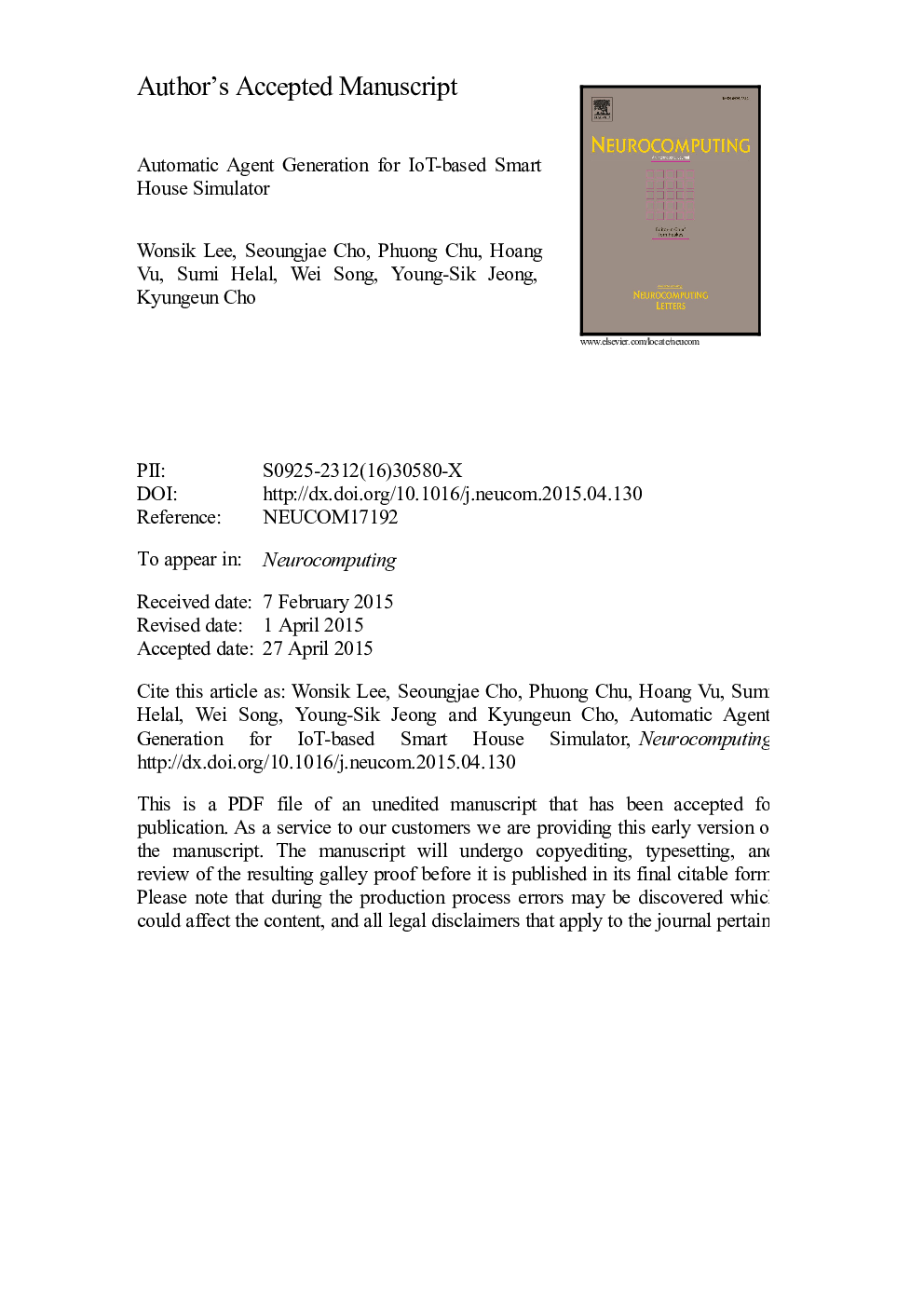| Article ID | Journal | Published Year | Pages | File Type |
|---|---|---|---|---|
| 4948588 | Neurocomputing | 2016 | 17 Pages |
Abstract
In order to evaluate the quality of Internet of Things (IoT) environments in smart houses, large datasets containing interactions between people and ubiquitous environments are essential for hardware and software testing. Both testing and simulation require a substantial amount of time and volunteer resources. Consequently, the ability to simulate these ubiquitous environments has recently increased in importance. In order to create an easy-to-use simulator for designing ubiquitous environments, we propose a simulator and autonomous agent generator that simulates human activity in smart houses. The simulator provides a three-dimensional (3D) graphical user interface (GUI) that enables spatial configuration, along with virtual sensors that simulate actual sensors. In addition, the simulator provides an artificial intelligence agent that automatically interacts with virtual smart houses using a motivation-driven behavior planning method. The virtual sensors are designed to detect the states of the smart house and its living agents. The sensed datasets simulate long-term interaction results for ubiquitous computing researchers, reducing the testing costs associated with smart house architecture evaluation.
Related Topics
Physical Sciences and Engineering
Computer Science
Artificial Intelligence
Authors
Wonsik Lee, Seoungjae Cho, Phuong Chu, Hoang Vu, Sumi Helal, Wei Song, Young-Sik Jeong, Kyungeun Cho,
